The Need for Education
 The Indian family served as both an economic unit and an agency for the transmission of knowledge, skills and values to the younger generation. Therefore, at this time, the community felt no great need for formal education, especially when this posed a real threat to the maintenance of their religious/cultural identity. Religious education began at most of the mosques. Very often these maktabs were serviced by those with little formal training. Some of the first mosques were at Tacarigua (1850) and Iere Village (1866). From around the 1930s, the maktab system played a useful in imparting Islamic education mainly to the younger Muslims. These classes, taught by persons in the community with some knowledge of Urdu, Arabic and religious teachings. The classes imparted the basic principles and practices of Islam and were held in simple sheds adjoining the mosques and even at people’s homes.
The Indian family served as both an economic unit and an agency for the transmission of knowledge, skills and values to the younger generation. Therefore, at this time, the community felt no great need for formal education, especially when this posed a real threat to the maintenance of their religious/cultural identity. Religious education began at most of the mosques. Very often these maktabs were serviced by those with little formal training. Some of the first mosques were at Tacarigua (1850) and Iere Village (1866). From around the 1930s, the maktab system played a useful in imparting Islamic education mainly to the younger Muslims. These classes, taught by persons in the community with some knowledge of Urdu, Arabic and religious teachings. The classes imparted the basic principles and practices of Islam and were held in simple sheds adjoining the mosques and even at people’s homes.
In addition, several other mechanisms for the transmission of religious knowledge existed. These include the Friday khutbah (sermon), an integral part of all Friday congregational prayers, religious and social functions such as Moulood and Quranic readings on occasions such as the Prophet’s ﷺ birthday, and the Miraj (ascension) of the Prophetﷺ. Such efforts fulfilled the social and educational needs of the community for some time, but were eventually unable to counteract the new challenges posed by the existing Christian missionary efforts and the influence from the dynamic westernized values of the wider society.
Efforts to Promote Formal Education
The then leaders recognized the imminent threats of cultural loss and hence were motivated to increase their efforts at formal education. Well-known historian Carl Campbell showed that there were several attempts to establish Indian and Muslim schools from as early as the 1920s.

Haji Gokool Meah Mosque, St. James
Muslims with resources were eager to establish institutions to cater for the educational needs of the community. Mohammed Ibrahim, a prominent entrepreneur, built a school and a mosque in 1924 in El Socorro. The Islamic Guardian Association also started an Arabic and Urdu school in Princes Town in 1925. Hajji Gokool another wealthy entrepreneur also built a mosque and a school in St James around 1927 in St James. Haji Ruknudeen also built a few small schools in different districts. This probably included the Lengua Islamic school which started in 1929 in Princes Town .
The idea of a Hindu-Muslim school surfaced around the 1920s. After much discussion, this school started in November 1931 with 150 students. It was located in Chaguanas, in the middle of the sugar producing region and therefore important to both Hindus and Muslims. The Hindus and Muslims in the surrounding areas withdrew their children from the CM school and gave their support to the Hindu-Muslim school. The school began in a large shed, which was also used for meetings and assemblies.
The Hindu-Muslim school of Chaguanas, was an obvious effort to check Indian conversion to the Presbyterian faith. According to Campbell one of the pioneers for the Hindu –Muslim was Nazar Hosein of Chaguanas. This school according to Carl Campbell was “probably the most controversial elementary school ever started in the colony”. Due to disturbances the attendance dropped to 92 in 1932. The Hindu-Muslim school though faced with many problems continued up to 1935.According to Haleema Kassim, a high school was started in 1936 in Sangre Grande by a convert to Islam, Abu Bakr Beaumont-Benjamin, (Kassim, 2000). In addition to religious instruction, academic subjects were taught. This opening of institution is an indication of the maturity and resourcefulness of the community, to have started a secondary school, at such a challenging era in history with so very little resources.
Indians’ isolation and the non-acceptance by the rest of the society worked in their favour. The bonds of solidarity were intensified as they relied more on each other. It also meant that circumstances were more conducive to cultural persistence than among their African predecessors.
Religious gatherings provided opportunities for social interaction. Also, the close-knit Indian family system facilitated cultural transmission to the younger members of society. Under the new conditions these cultural traits were inevitably adapted and modified.
The early Indian Muslims were therefore able to maintain their religious identity amidst the pressures of a plural society, with several adaptations. Minor theological differences were brushed aside as survival was high on their agenda. They were largely united as they successfully resisted integration with the wider society. Robert Jack Smith (1963), on the basis of studies conducted among the Muslims of Trinidad concludes: “…to the present time, family organization and organized religion have engaged the forces of assimilation and acculturation and won…”

Qazi Haji Ruknudeen Sahib
Several efforts were made to teach Indian-based languages. Hindi and Urdu classes

El Socorro Islamia School first building
were held at the Prince Albert Street Mosque Hall in 1945 and in Marabella in 1938. The class included Hindus, Muslims and Christians. A delegation was sent to the governor presenting the demand of the Indians. The delegation included Hajji Ruknudeen, Mohammed Hosein, Mohammed Ibrahim, Hajji Gokool, T.R. Mahabirsingh, J. Gosine, R. Maharaj, Mohammed Aziz and C. Mathura. The Marriot/Mayhew report indicated that the Indians who comprised 38.5% of the population (1932 census) should have had their own denominational schools.
There were also several efforts to establish private schools, but due to the absence of state aid, adequate resources were not available to provide viable alternatives to the Christian schools. The leaders of both Hindus and Muslims, including Nazir Ahmad Simab and Ameer Ali agitated for years to obtain state aid for a non-Christian school. And their efforts did bear fruit when the El Socorro Islamia School was established by the Takveeatul Islamic Association (TIA) in 1942. This institution operated as a private school for seven years before becoming the first non-Christian school to receive state assistance.

Moulvi Ameer Ali

Nazir Ahmad Simab (ra)
Discussions were held between Nazeer Ahmad Simab (Tabligh ul Islam) and Moulvi Ameer Ali (TIA). They used an already old building on TIA lands on Bissessar Street in El Socorro. Initially, the Director of Education was approached for aid, but he turned down their request. He nevertheless gave the green light to run the school privately for two years, starting from March 2, 1942. They had a staff of six teachers and an initial enrolment of over 44 pupils. It was still necessary for the premises to conform to government regulations, pertaining to sanitation, and space. It was not until 1949 that aid was granted.
In 1949, there were 250 Christian schools and 50 Government schools. By 1952, Hindu schools started to receive state aid and by 1962, there were 46 Hindu schools and 15 Muslim schools.
(Source: A Digest of Statistics on Education, 1962-1963).
Subsequently, the government considered both Hindus and Muslims capable of administering schools in the colony. Within a short time several Hindu and Muslim schools were established, through the assistance of Roy Joseph, the then Minister responsible for education.
Fragmentation in the Muslim Community
Western Culture
The attractiveness of modernisation/westernization was difficult to resist and by the 1960s, many younger Muslims, especially those with a secular education, became assimilated into the existing and seemingly exciting wave of irreligiousness.
This period of decline, was exacerbated when Muslims had the opportunity for secondary and tertiary education (most assimilation occurred among those who were more financially endowed, educated and had more resources). A dichotomy therefore developed between the traditionalism and stagnation of religion (as taught and practised at the time) and the excitement and dynamism of modernity. These two worlds seemed irreconcilable.
At this time, most of the youth were being educated in the English Language, but religious instruction continued in Urdu which the majority could not understand. Many of the Friday sermons were still given in the Urdu language. So as a result, those children who were better educated saw the modern, scientific and progressive approach to life as more attractive and appealing than a seemingly backward, irrelevant, traditional way of life. The situation was therefore conducive to a decline in the knowledge and practice of Islam.
New Educational Policy
At the time of achieving political independence in 1962, there were drastic changes in the educational policy in Trinidad and Tobago. Of concern here was the introduction of the Common Entrance examination and the increased availability of secondary school places through the establishment of several Government secondary schools. Of course, such a move was most welcome by the population in the face of the existing elitism in the secondary school system and the general lack of opportunities for members of the lower classes to achieve social mobility through education. Educational expansion also meant however, a reduction in the power of the denominational boards and greater state control in education. In such a context, the Muslim secondary schools had very little opportunity to blossom into independent institutions with their own school culture and traditions, without state interference. Even the existing church schools to a large extent lost their unique character in the face of deliberate attempts to promote a homogeneous society based on nationalistic and therefore secular ideals.
At this time the leadership of Muslim groups appeared to support the status quo and in return enjoyed some degree of privilege in accessing opportunities. They encouraged the community to support the dominant values of the wider society and therefore their unique cultural identity was being eroded.
Religion was promoted as an individual affair. Muslims were encouraged to pray, fast and give charity, but the social, economic and political aspects of the faith were not emphasized. The peaceful tolerance, amidst a growing nationalism often meant compromise.
Increase in Muslim Schools
The TIA Schools
 The TIA followed its first school with four others.The Aranguez Islamia in1951, the Warrenville Islamia in1951, the Five Rivers Islamia, Arouca April 13, 1953 and the Lengua Islamia, south of Princes Town, in January 1956. Several estates were very charitable to the Muslim community by granting lands for the construction of these schools. Lands were donated by Five Rivers Estate for the Tacarigua School, and the Gordon Grant Cocoa Estate for the school at Lengua).
The TIA followed its first school with four others.The Aranguez Islamia in1951, the Warrenville Islamia in1951, the Five Rivers Islamia, Arouca April 13, 1953 and the Lengua Islamia, south of Princes Town, in January 1956. Several estates were very charitable to the Muslim community by granting lands for the construction of these schools. Lands were donated by Five Rivers Estate for the Tacarigua School, and the Gordon Grant Cocoa Estate for the school at Lengua).
Much of the funds for the newly established schools came from donations and fund-raising activities. Mosque halls were used to accommodate several schools. The Aranguez Islamia School was located at the mosque compound in El Socorro, just a five minute walk away from the El Socorro Islamia School on Bissessar Street. It stayed there from 1951 until around 1966. The Warrenville school was located in the hall of the Warrenville mosque from 1952 until around 2000.
The ASJA Schools
 The first three ASJA schools were opened in January 1953 in Charlieville, Carapichaima and Rio Claro. In 1954, the Barrackpore ASJA School was built. These were followed by schools in Princes Town (1955), San Fernando (1956), and Point Fortin (1959). These schools were initially simple structure built by private funds raised by the local community. (Tiab Rahaman, personal interview, 2007). With subsequent government assistance, the initial structures were subsequently replaced by the more elaborate structures that exist today.
The first three ASJA schools were opened in January 1953 in Charlieville, Carapichaima and Rio Claro. In 1954, the Barrackpore ASJA School was built. These were followed by schools in Princes Town (1955), San Fernando (1956), and Point Fortin (1959). These schools were initially simple structure built by private funds raised by the local community. (Tiab Rahaman, personal interview, 2007). With subsequent government assistance, the initial structures were subsequently replaced by the more elaborate structures that exist today.
In 1967 a private secondary school was established by the ASJA in Princes Town It operated until 1969, (Kassim, 1998). It started with two form one classes. The main reason for the discontinuation was decline in attendance and lack of funding. Some of the students continued their education at the San Fernando school.
Another Muslim school was started in Back Street, Tunapuna in August 1969 on lands donated by S.S. Hosein. This school was briefly located at the nearby Tunapuna mosque and was then shifted to the Back Street compound. The school was called the Hajji Ruknudeen Girls’ High school. A concerted effort was made to create an Islamic atmosphere at the school. The staff was all female, though not all Muslim The school, like other privately funded institutions at the time, experienced a decline attendance as increased opportunities for free secondary education became available in the early 1970s.

ASJA Boys College, San Fernando
In the early 1960s, the ASJA established two Government-assisted secondary schools, the ASJA Boys’ College and the ASJA Girls’ College. There were several attempts by other groups to establish additional primary and secondary schools, but these remained private institutions.
The ASJA Boys’ College started in 1960 as a private secondary school at the mosque compound on Mucurapo Street in San Fernando. An independent structure was constructed in 1962. It continued as a private school until September 1966, when it started receiving State aid. The ASJA Girls’ started as a private school on Cipero Street (Sumadh Building) in San Fernando. It was then temporarily located at the mosque compound, at which the Boys’ College was earlier located. In 1968 it was moved to its present location on Todd Street. This school was privately run until 1976. The ASJA also started a number of private schools. The ASJA Girls’ College in St Croix, Princes Town at a house belonging to Hajji Abdul Sattar ( a former ASJA leader) and the Hajji Ruknudeen Girls High School in Tunapuna. These two institutions were forced to close due to high operating costs. The fees received were usually inadequate to pay teachers’ salaries.

ASJA Girls College, San Fernando
State aid meant less control by the board, with less autonomy in the content and implementation of the curriculum and the selection of teachers. It is reported that the President of ASJA resisted the Girls’ school becoming government-assisted until 1976. This move was criticized by internationally renowned Islamic scholar, Ahamad Husein Sakr on his visit to Trinidad for the RABITA (Muslim World League) conference in 1976. According to ASJA officials, they allowed the schools to become state aided because of the high operating costs of private schools.
The change did offer several benefits: through higher salaries, they attracted better teachers, more funds for maintenance. In 1989 the Advanced levels were introduced and shortly after the laboratory facilities were upgraded. Within a short time, there was an improved student intake and therefore better overall academic performance. This school had become one of the top Girls’ schools in Trinidad and Tobago. It has won many competitions, including Volleyball. The Boys’ College also did exceptionally well winning the first National scholarship for ASJA in 2000.

Dr Ahmad Sakr (ra)
In the 1990s ASJA also opened several pre-schools and intends to open more at mosques throughout the country. One of the pre-schools was opened in Caroni in 1999, with some state assistance. Another was opened in 1996 at San Fernando. In 2000 other secondary schools were opened with the ASJA Boys’ and Girls’ colleges in Charlieville to accommodate 875 pupils each. ASJA’s thrust in education does not only serve the Muslim community, but the nation as a whole. In the primary schools out of 2785 pupils, 1566 are Muslims.
The TML schools

Murtuza Baksh (ra)
The Trinidad Muslim League, originally a part of the TIA was involved in the early struggle for state aid. Therefore when it was formed, one of the chief aims was to play an active role in the education system of Trinidad. With the help and encouragement of the Minister of Education and Social Services at that time, Mr. Roy A. Joseph, the Trinidad Muslim League established its first primary school at San Fernando on the 19th of January 1953. The school was located on the lower floor of the Prince Albert Street Mosque and thirty nine pupils were enrolled on the first day. Murtaza Baksh, who served on the Teaching Service Commission, was the first headmaster and he was supported by five members of staff. In the first year of its existence, the school got three Exhibition Scholarships, two Bursaries and one Scholarship to the Naparima Girls’ High School. Hydar Ali, the first student recorded on roll at the school remembers arriving the first day of school at six-thirty in the morning long before the eight-thirty start. He went on to win a Texaco Scholarship in 1954 and proceeded to Queens Royal College. He is presently a Mathematics Lecturer at the University of the West Indies.
The second primary school to be established was at Libertville. Lands were donated by Ghul Hassan located next to Libertvillle Masjid. A relative of Ghul Hassan donated the lumber from his sawmill. The local community provided the labour and solicited donations from the community. In the early 60s, the TML also started a secondary school in Princes Town. (TML Independence Brochure, 1962).
The Rio Claro Muslim League School opened its doors on the 1st of February, 1955. The first principal was Leo Nabab and there were thirty-five students enrolled. Eventually the name of the school was changed to Libertville TML Primary School. Presently the school has eight staff members including the principal.
The TML was a very small organisation and depended upon donations of land and cash. A banquet dinner was held by the TML in 1957. It is reported that both Roy Joseph (Minister of Education) and Bhadase Sagan Maharaj (Hindu leader) were present and encouraged the TML to start a primary school in St. Joseph. According to Nazeer Mohammed, there was a shortage of school places in the area and hence permission was given to the TML to meet the need. Ladies were involved at every stage, even going to the river next to the school to excavate boulders and gravel.
On Monday 29th April, 1957 the TML Primary School, St. Joseph was opened with a population of eighty-three students on roll. By the end of the year enrollment had increased to one hundred and seventy-eight and a staff of three. The first principal was Murtuza Baksh. Throughout the years pupils from the three primary schools have excelled in various fields and have made valuable contributions to society. Many have gone on to receive Open and National Scholarships.
The year 1985 marked the beginning of TML involvement also in kindergarten and secondary school education. In April, 1985 the TML Kindergarten opened its doors. The first principal was Vidiya Khan. The staff of the TML Kindergarten presently consists of three head teachers and one assistant teacher with a student population of sixty-two. In September of 1985 also the Trinidad Muslim League successfully entered the field of secondary education. The Rafeeq Memorial TML Secondary School was opened at the League’s Headquarters on the Eastern Main Road in St. Joseph. The first principal was Nazira Ali and it began with one Form One class. The present principal is Fareiza Mohammed and she is supported by a staff of thirteen teachers with two hundred and sixty-two students on roll. Thus through the establishment of its schools the Trinidad Muslim League Incorporated has tried to nurture the importance of knowledge embedded in the religion of Islam.
Conclusion
This article gives an overview of the Muslim involvement in education in Trinidad and Tobago. It examines the community’s successful battle with the forces of acculturation and assimilation. The information indicates that the Muslim community has successfully struggled to maintain a visible identity in the face of numerous forces that sought to threaten its very existence.
It also considers the period of assimilation after World War II despite the concession to operate schools, which went hand in hand with increased social mobility. The subsequent arrival of knowledgeable persons who were able to teach Islam to English-speaking people and the availability of Islamic literature in the English language led to a re-awakening among the local Muslims. This revival and increased interest took place from the early 1970s in Guyana and Trinidad simultaneously. During this period the return of many persons of African descent to Islam increased significantly. Many of the returnees joined the existing institutions and whereas others formed their own groups.
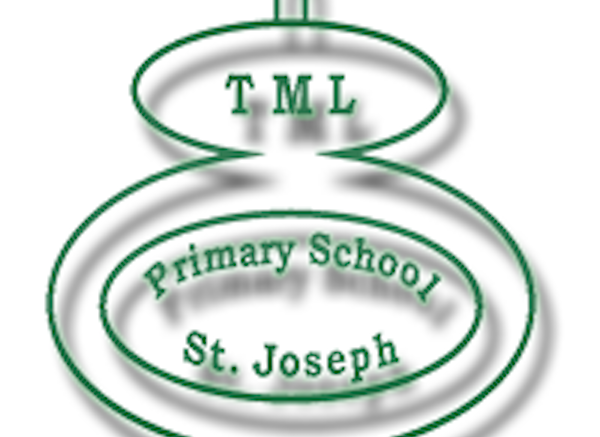
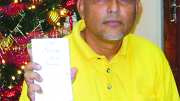
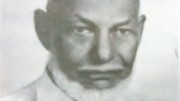
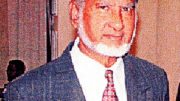
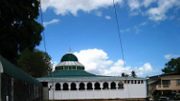
Be the first to comment on "Education Among Early Muslims In Trinidad"